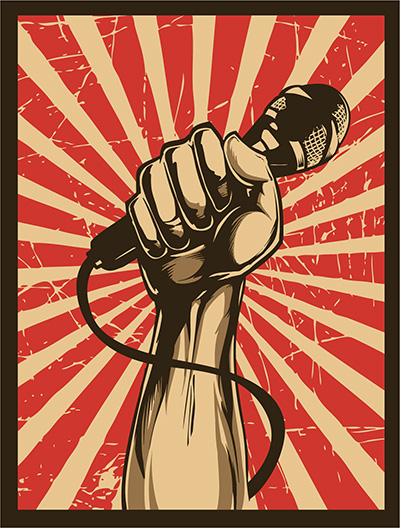Chapter 23:Why are chart positions so important?
The UK Singles Chart was developed in 1969 and is compiled by the Official Charts Company in order to show how well songs that are part of the British record industry are selling.
Consisting of 200 positions, the chart works off a basis of both download numbers and physical sales figures from current singles that are on the market. The integration of downloaded tracks and physical sales numbers occurred in 2007 and in order to be eligible to rank as a chart single, they must be available to by for a minimum of 40p. The inclusion of downloaded tracks means that songs that have never been physically available to buy in the shops have the potential to make it the number one spot.
This stance is great for artists who possibly can’t afford to have CDs made up and although unknown artists aren’t likely to shoot to the number one spot without a physical CD release and marketing, they still have the potential to actually enter the chart as long as their music is downloaded via an approved medium.


Whilst the official chart does consist of a huge 200 positions, most outlets only broadcast the top 40, purely for time constraint reasons. The chart positions are released on Radio One every Sunday, where Jameela Jamil is currently the presenter who takes listeners through the chart from 40 to 1.
On top of the mainstream UK Singles charts, iTunes also has chart rankings that correlate with the genre of the music, allowing artists to become top of the chart that falls in their music bracket as opposed to battling against more commercial tracks and artists.
Many artists choose to only pay attention to the chart that is important to them, for example, if they are a DJ or dance music producer, the dance chart is what they deem relevant to them. However, many artists do cross over the boundaries and appear in more than one chart which can deem them both a commercial and underground success.
Chart positions are important to an artist because they give a good indication of the reception that their music is getting from the public; if they rank highly in a chart, they will obviously be getting a good reception from the public.
If an artist releases a track that isn’t well received and doesn’t score a high chart ranking, this will give them an idea of what their audience wants from them and they can then compare it previous releases that may have done well; this will help an artist to release music that people want to hear and pay for in the future
There are many artists who claim that they don’t pay much attention to chart positions; this is a silly move. If you are a full time music artist, getting high chart positions is your meal ticket; you need to have a prominent presence in the industry in order to make money and chart positions are a clear way of showing just how prominent you are. Getting high rankings is not selling out, it’s being successful.
Once you have become known as an artist who is capable of consistently achieving high rankings, companies will correlate this with your level of popularity and look at you as a possible marketing tool for their business. This in turn can bring in additional revenue from sponsorship and advertisement deals, but to get the deals you have to be influential.
Whether an artist buys into chart positions or not, rankings are certainly a direct correlation with the commercial success of their work.

- Contents
Introduction to the Guide - Chapter 1:
What is Music PR? - Chapter 2:
Writing Great Music - Chapter 3:
Basic Recording Studio Set Up - Chapter 4:
How Loops and Samples can help you make your music - Chapter 5:
How to get an online presence - Chapter 6:
The importance of social networking and keeping accounts updated - Chapter 7:
How to decide on an image/style for your band or as an artist - Chapter 8:
The importance of consistency and uniformity within your brand
- Chapter 9:
Registering your music with PRS/PPL – Why? - Chapter 10:
What is music publishing? - Chapter 11:
What are ISRC Codes / Barcodes? - Chapter 12:
Why it is important to network with your music contacts - Chapter 13:
How to write a music press release - Chapter 14:
How to get music reviews - Chapter 15:
How to get radio airplay - Chapter 16:
Finding music bloggers in your genre - Chapter 17:
Why are music bloggers important?
- Chapter 18:
How to find gigs - Chapter 19:
How to set up a band tour - Chapter 20:
Merchandising - Chapter 21:
Promote your music and make money on YouTube - Chapter 22:
What is Sync Licensing? - Chapter 23:
Why are chart positions so important? - Chapter 24:
Why should you have multiple remixes of a dance track? - Chapter 25:
Search Marketing and Music PR - Chapter 26:
Music distribution